I planned a ride in Québec under the pretense that I would be getting a French holiday without the hassle of going to France. What I found and what I saw turned out to be so much better than I could have imagined––and I didn’t even have to leave North America.
Québec is a province of Canada, the country’s largest by area and second-largest by population. Most Québecois live close to the St. Lawrence River, but the province stretches north to the 62nd parallel and up to the Hudson Bay Straits; much of the north is uninhabited wilderness. In many ways Québec is as different from the rest of Canada as France is from England. French is the official language, and though many people in major towns and cities are bilingual, elsewhere a knowledge of basic French––or a good French phrasebook––is a great asset. The Québecois appreciate your attempts to speak their language, even if you fail miserably.
My journey started in Montreal after collecting a KTM 1190 Adventure. Although just five days earlier the sun shone brightly on the Canadian Formula 1 Grand Prix, my arrival coincided with the opening of the heavens and a continuous downpour that tested every seam of my rain gear. Undaunted, I arranged to ride around the Gilles Villeneuve F1 circuit, despite the rim-deep water.
The rain was forecast for two days, so I just had to get on with it. I headed east to the Eastern Townships and the beautiful little town of Magog. I do not mind riding in the rain, and though it was not the best for sightseeing the promise of hot tubs and hot toddies kept me going. By 1 pm the following day I crossed the St. Lawrence River over the Laviolette Bridge and reached Trois Riviéres to the north as the rain subsided. Still dripping wet I dropped in at Poivre Nior, the only five-star restaurant between Montreal and Québec City, for lunch. Sitting by the grand St. Laurent river (everything is French from this point on), I ate magnificent tapas and drank some sorely needed hot coffee. Suitably dried out, and with the sun now shining, I set out for an afternoon ride on a loop, east along the river to St.-Anne-De-La-Pérade and then north and west through newly green farm country, then back to Trois Riviéres. During a walk around the town center during the light they call “the magic hour” I encountered the closing stages of a bicycle race and its accompanying celebrations. It wasn’t the Tour de France, but it seemed like the whole town turned out to spectate.
On day three I hit the road early and headed west along the river to Yamachiche before turning north along route 153 towards Saint-Alexis-des-Monts and Lac Sacanomie. The warm, early summer sun was a welcome respite from the two days of rain. It was a nearly solitary ride through the Mauricie farmland, with almost no traffic as I rode through village after village and by farm after farm––until I entered one village a little hotter than I ought to have done. Some distance ahead I spotted a police car and slowed down to the speed limit long before I reached him, but he still pulled out and followed me for about 10 kilometers before getting bored and passing me.
Lac Sacanomie and its hotel, set among pine forests, are almost invisible until you are right on top of them. The luxury hotel is built of logs from the local forests and looms over the huge lake like a king surveying his domain. Time was short, however, so I headed back to Saint-Alexis-des-Monts and the Nouvelle France Micro Brewery, a local biker hangout on weekends and holidays. As in many parts of North America, micro breweries are very popular. This was Father’s Day in Québec and there were about 30 bikes parked there.
That afternoon I headed farther east toward the National Park La Mauricie. Traffic was so light you would have thought it was a motorcycle-only day. Inside the park it was immediately obvious that this was moose country, and that motorcycles are defenseless if a 1,500-pound moose decides to cross the road. In my head I was simultaneously thinking “I hope I see a moose” and “I hope to God I don’t see a moose.”
That afternoon, after 100 miles of riding with 40 miles of it through National Park La Mauricie, I arrived at the small town of Grand Piles and the absolutely charming Auberge Le Bôme, situated by the Saint-Maurice River. An auberge is a small hotel or a large bed-and-breakfast that also serves dinner; bearing in mind that the cooking up here would win awards in Paris, an auberge with a great chef salad is a splendid way to recover from a long day in the saddle. Mathilde and Jean-Claude were fine hosts who were only too happy to educate me on the finer points of Québec and French culture.
The weather forecast was good for the next couple of days as I headed north for the longest one-day ride of the trip, north along Route 155 to Lac St. Jean and Saguenay. The winding road, with its constant elevation changes, follows the Saint-Maurice River, providing steady scenic stimulation with its high granite cliffs towering above the flow of the broad waterway. This is a main trucking route, but I found the truckers were courteous to me throughout this 150-mile leg of my journey.
I reached the top of the range of hills as I was approaching Chambord, and laid out before me was an amazingly large expanse of water, so large I thought for a moment it was the sea. As the road snaked down to the water’s edge, I was presented with yet another colorful palette of the north country in the summer sun.
My goal that evening was to make the town of Chicoutimi where I was to have dinner with two members of the Club Moto Saguenay and learn more about how they handle their short summer riding season. Sometimes culture is best learned over a glass of local beer.
The next morning other members of their club joined us and we rode to one of their favorite destinations, St.-Rose-du-Nord, known for its ice cream; unfortunately, that morning the ice cream machine was broken. C’est la vie. St.-Rose-du-Nord is part of what is called “little Switzerland,” with the large, wide river and rolling hills all set against a backdrop of granite mountains. There were also dairy cows wearing bells, scattered around the fields and happily chewing the cud. Sadly, I did not have any Julie Andrews on my iPod.
After lunch in Ville de la Baie at the famous Le Doyen restaurant at Auberge des 21––during which I was presented with honorary membership in Club Moto Saguenay complete with membership card and a T-shirt––it was time to hightail it for two-and-a-half hours down Route 175 to a 4:30 pm appointment in the heart of the historic neighborhood of Old Québec. Not so long ago Route 175 was a twisty two-lane road that likely presented a challenge for fast travel, but now it is a first-class inter-province highway. Unfortunately for motorcyclists, and probably for people in a hurry generally, the speed limit is 100 kph (62 mph). Fortunately for my schedule, I only saw one police car and he did not seem terribly interested in me. Most people were cruising at 70-plus mph with apparent impunity, though I had the feeling that perhaps the “Beware of the Moose” signs kept higher speeds in check.
The ride was stimulating even though the weather shifted toward the cold and wet side of the spectrum. Arriving in Québec City was easy but getting through the surface streets around Old Québec was much more of a challenge. The winter weather is severe and the roads take quite a beating. The authorities only have about four months each year to make repairs, clogging suburban and urban roads with repair crews and detours.
Québec was originally called Kébec, from an Algonquin word meaning "where the river narrows." The St. Lawrence might narrow here but it is still very wide. Founded in 1608, Québec City is one of the oldest cities in North America, and has the only fortified city walls remaining north of the Mexican border. As the capital of the province and the seat of the provincial government, Québec has all the grandeur you might expect. The cobbled streets, large murals displayed on old houses, boutique restaurants, outdoor coffee shops, and the only funicular I have ever ridden on, all add to the undeniable charm of this gem of the province.
The following morning I witnessed a real treat, the changing of the guard at the Citadel, which is part of the city’s fortifications. Ordinarily this is a sight that you would have to travel to London to see, but for Americans, it is here just north of your own border. Pomp and ceremony still command an audience here and it is well worth your time to seek out and take in the spectacle. The Citadel is also an active fort, home of the Royal 22e Régiment, and manned by armed soldiers––and not just armed with bayonets.
With the St. Laurent immediately to my right I headed northeast to the region of Charlevoix. The river got wider and wider as the fresh water met the salt water of the estuary. There were no more bridges across the river, only ferries. Small rivers crossed under the road and melded into the Great River, and the beautiful green hues of fertile farms flashed by between boutique villages. The sunshine lapsed into cool showers as I approached Baie-Saint-Paul at the mouth of the Gouffre River, and Hotel La Ferme, my stop for the night.
Self-described as “between nature and sophistication,” this hotel boasts a very distinctive design. It has its own railway station and organic gardens, and is very “green” in concept and practice. There’s also a “Motorcycle Friendly” emblem hanging on its welcome sign, backed up by a motorcycle and sidecar parked at the entrance. They were part of a tourist service provided by a local business so you can ride in the sidecar or on the pillion seat and enjoy the local attractions (such as, perhaps, a pleasant champagne tour) without the responsibility of driving.
The next morning I headed farther north along the river through stunning vistas to La Malbaie for a lunch of typical French brevity––baguettes with salmon and, since I was riding, fruit juice and coffee. Seventy kilometers farther on brought me to the influx of the grand Saguenay River and the mighty St. Lawrence at the small community of Baie-Sainte-Catherine. Here I traded my KTM for a Zodiac and spent three hours whale watching. Given the rain and the wind, I would have bet against seeing any whales––but I would have lost. The guide from AML not only knew how to handle a Zodiac inflatable, but despite the weather he put me close to a humpback whale and two minke whales, and as close as the law would allow him to bring me to two beluga whales. I am sure that on calmer days we might have seen more and gotten closer, but on this day, I was impressed. I did not know that whales ventured so far inland along the St. Lawrence. I was even more shocked to learn that killer whales sometimes came this far up stream to feed on other whales.
Late in the afternoon I headed back to La Malbaie for my last night on the road. My motorcycle-friendly host was Stephane, the innkeeper at La Maison des Rives. He offered me a small and very personable accommodation with a view of the great river from my bedroom. I also had one more surprise that I had not planned––dinner and entertainment at the Bootlegger Inn. As great as my trip had been, I was not prepared for this raucous final night on the road.
When Prohibition was in full swing in the U.S.A., and alcohol was forbidden by the Catholic Church in Canada, the Bootlegger Inn (its French name, La Maison du Bootlegger, sounds much classier) was built to fool the morality squads. It bristles with hidden doors, concealed bars, and secret passages, all linked by narrow corridors. Before dinner, everyone gets a full tour of the house, and just before the end of dinner, a full-on rock-‘n’-roll show performed by the house band. The band was as good as I have seen anywhere, and better than most. It was a full evening’s show and a wonderful way to end my visit to Charlevoix.
But it was not over yet. The next morning, my motorcycling host guided me along the Route des Montagnes, a beautiful road through yet another “little Switzerland” that all too soon brought me to the main highway heading back to Montreal.
Québec is the only province or state I know of that publishes a Carnet booklet of maps and tour suggestions directed to the motorcycle tourist. If they published in English they would get a lot more American motorcyclists venturing north for the delightful touch, taste, and feel of French culture.











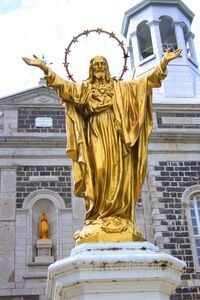
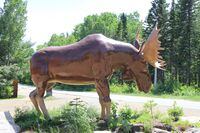


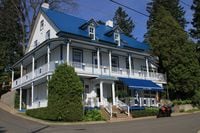

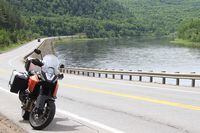



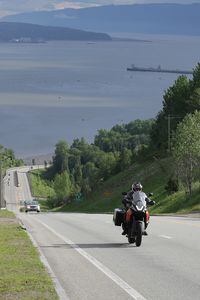

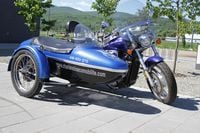
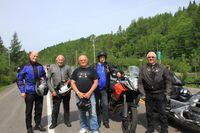

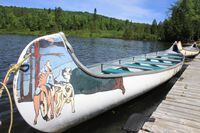

/cloudfront-us-east-1.images.arcpublishing.com/octane/7GJYDUIPXRGMTMQKN6ONYOLBOU.jpg)
/cloudfront-us-east-1.images.arcpublishing.com/octane/MUQLOVLL2ZDGFH25ILABNBXKTI.jpg)
/cloudfront-us-east-1.images.arcpublishing.com/octane/TNOU5DNE2BC57MFPMGN2EIDXAM.jpg)
/cloudfront-us-east-1.images.arcpublishing.com/octane/GTCXACQGJ5HAPDTGWUQKDEH44E.jpg)
/cloudfront-us-east-1.images.arcpublishing.com/octane/S35YGSEMEZB4BLTDJTSZPF4GLA.jpg)
/cloudfront-us-east-1.images.arcpublishing.com/octane/5UOT6HPX2JFMRJAX6EH45AR4MQ.jpg)
/cloudfront-us-east-1.images.arcpublishing.com/octane/OKWOJWAKP5EP3OACCRRWPCIX2Q.jpg)
/cloudfront-us-east-1.images.arcpublishing.com/octane/2WF3SCE3NFBQXLDNJM7KMXA45E.jpg)
/cloudfront-us-east-1.images.arcpublishing.com/octane/G4MG6OUCJNBSHIS2MVVOTPX65E.jpg)
/cloudfront-us-east-1.images.arcpublishing.com/octane/IIGGWFOTOJGB7DB6DGBXCCMTDY.jpg)
/cloudfront-us-east-1.images.arcpublishing.com/octane/QSTCM6AVEZA5JJBUXNIQ3DSOF4.jpg)
/cloudfront-us-east-1.images.arcpublishing.com/octane/U4I7G625B5DMLF2DVIJDFZVV6M.jpg)
/cloudfront-us-east-1.images.arcpublishing.com/octane/B6XD6LS6IVCQPIU6HXDJSM3FHY.jpg)
/cloudfront-us-east-1.images.arcpublishing.com/octane/ICL63FEDDRDTTMINYICCEYGMDA.jpg)
/cloudfront-us-east-1.images.arcpublishing.com/octane/FCGZHQXRBZFLBAPC5SDIQLVF4I.jpg)
/cloudfront-us-east-1.images.arcpublishing.com/octane/WNOB6LDOIFFHJKPSVIWDYUGOPM.jpg)

/cloudfront-us-east-1.images.arcpublishing.com/octane/X33NU3E525ECRHXLNUJN2FTRKI.jpg)
/cloudfront-us-east-1.images.arcpublishing.com/octane/6KKT5NNL2JAVBOXMZYS5ZO76YA.jpg)
/cloudfront-us-east-1.images.arcpublishing.com/octane/J5RKG5O455GMPGQRF2OG6LRT7A.jpg)
/cloudfront-us-east-1.images.arcpublishing.com/octane/GX2CIZKQVRH2TATDM26KFG2DAE.jpg)
/cloudfront-us-east-1.images.arcpublishing.com/octane/ZWIDYSAKQZHD5BHREMQILXJCGM.jpg)
/cloudfront-us-east-1.images.arcpublishing.com/octane/CYUHJZCTSJCH3MRAQEIKXK7SCQ.jpg)
/cloudfront-us-east-1.images.arcpublishing.com/octane/LKOFINY56FCXJCANJ5M7ZDQUBY.jpg)